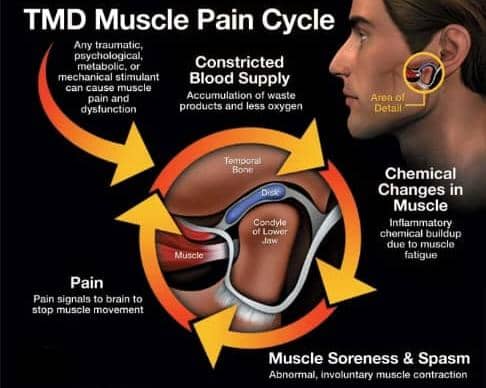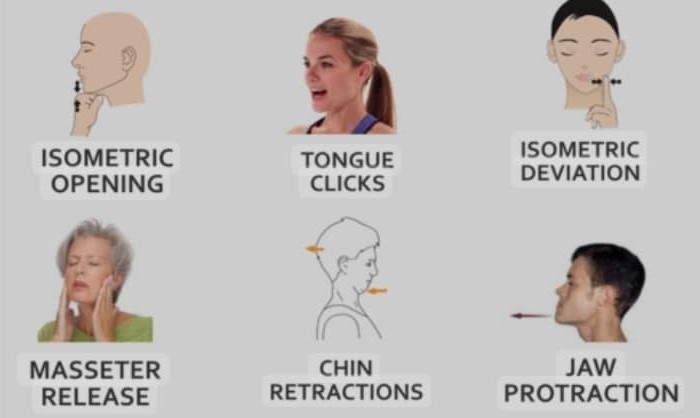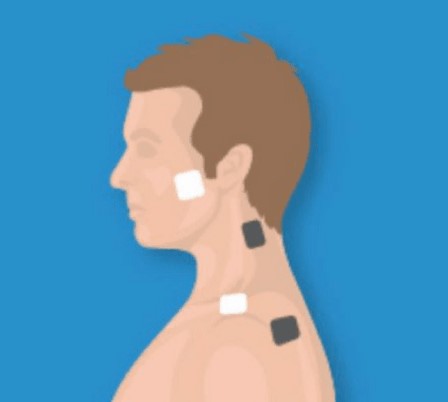
Understanding TMJ Disorders and Trigger Points
The TMJ connects your jawbone to your skull, enabling movement necessary for talking, eating, and yawning. Dysfunction in this joint can arise due to a variety of factors, including:
- Stress-induced clenching or grinding (bruxism)
- Poor posture
- Misaligned teeth or bite issues
- Trauma or injury
.png)
- Masseter (chewing muscle)
- Temporalis (on the sides of the skull)
- Medial and Lateral Pterygoids (muscles controlling jaw movements)
- Neck and upper back muscles
The Role of Physiotherapy in TMJ Pain Management
Physiotherapy plays a pivotal role in identifying, treating, and preventing the recurrence of myofascial trigger points. Here’s how:
1. Trigger Point Release Techniques
Physiotherapists use manual therapy techniques such as:
- Myofascial Release: Gentle, sustained pressure on the trigger points to relax muscle tension.
- Trigger Point Massage: Focused kneading to improve blood flow and reduce tightness.
- Dry Needling: Inserting fine needles into the trigger points to alleviate pain and improve mobility.
Poor posture, especially during prolonged desk work or smartphone use, contributes significantly to TMJ dysfunction. Physiotherapists can guide you in maintaining:
- Neutral spine alignment
- Relaxed jaw positioning
- Proper ergonomic setups

3. Therapeutic Exercises
Customized exercises target the jaw and neck muscles to improve mobility and strength. Examples include
- Jaw stretches: Gentle opening and closing movements.
- Isometric exercises: Resisting gentle pressure to strengthen the jaw muscles.
- Neck stretches: Loosening tight cervical muscles to reduce referred pain.
Stress often leads to jaw clenching or teeth grinding. Physiotherapists can incorporate:
- Diaphragmatic breathing exercises
- Progressive muscle relaxation
- Biofeedback techniques
Advanced physiotherapy tools like ultrasound therapy, TENS (Transcutaneous Electrical Nerve Stimulation), and cold laser therapy can provide additional relief by reducing inflammation and muscle tension around the TMJ.

.png)
Benefits of Physiotherapy for TMJ Trigger Points
A structured physiotherapy plan offers numerous advantages:
- Pain Reduction: Targeting trigger points alleviates localized and referred pain.
- Improved Jaw Function: Enhanced muscle flexibility and strength support smoother jaw movement.
- Prevention of Recurrence: Addressing the root causes—like poor posture or stress—prevents trigger point reformation.
- Enhanced Quality of Life: Pain relief and restored function allow you to resume daily activities comfortably.
The Urban Sports & Physio Centre Advantage
At Urban Sports & Physio Centre, we specialize in personalized TMJ pain management. Our approach includes:
- Comprehensive assessments to pinpoint trigger points and underlying issues.
- Advanced manual therapy techniques tailored to your condition.
- Holistic guidance on posture, stress reduction, and home exercises.
Take the First Step Toward Pain-Free Living
Don’t let TMJ pain hold you back. With physiotherapy, you can address trigger points, restore jaw function, and enjoy lasting relief. Contact Urban Sports & Physio Centre today to schedule your consultation and regain control over your health.
#TemporomandibularPainRelief#TriggerPointTherapy#PhysiotherapyWorks#JawPainSolutions
#UrbanSports&PhysioCentre#UrbanSports#rehabcentre#jbphysiocentre#physiotherapy#physi






 BR 17341
BR 17341  VN 4517
VN 4517  US 4021
US 4021  AR 2699
AR 2699  IN 2121
IN 2121  MX 1760
MX 1760  CN 1482
CN 1482  MY 1387
MY 1387 

